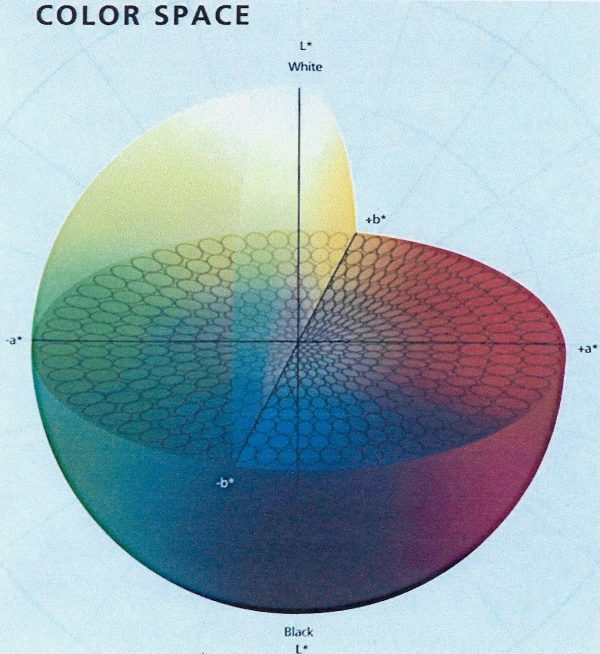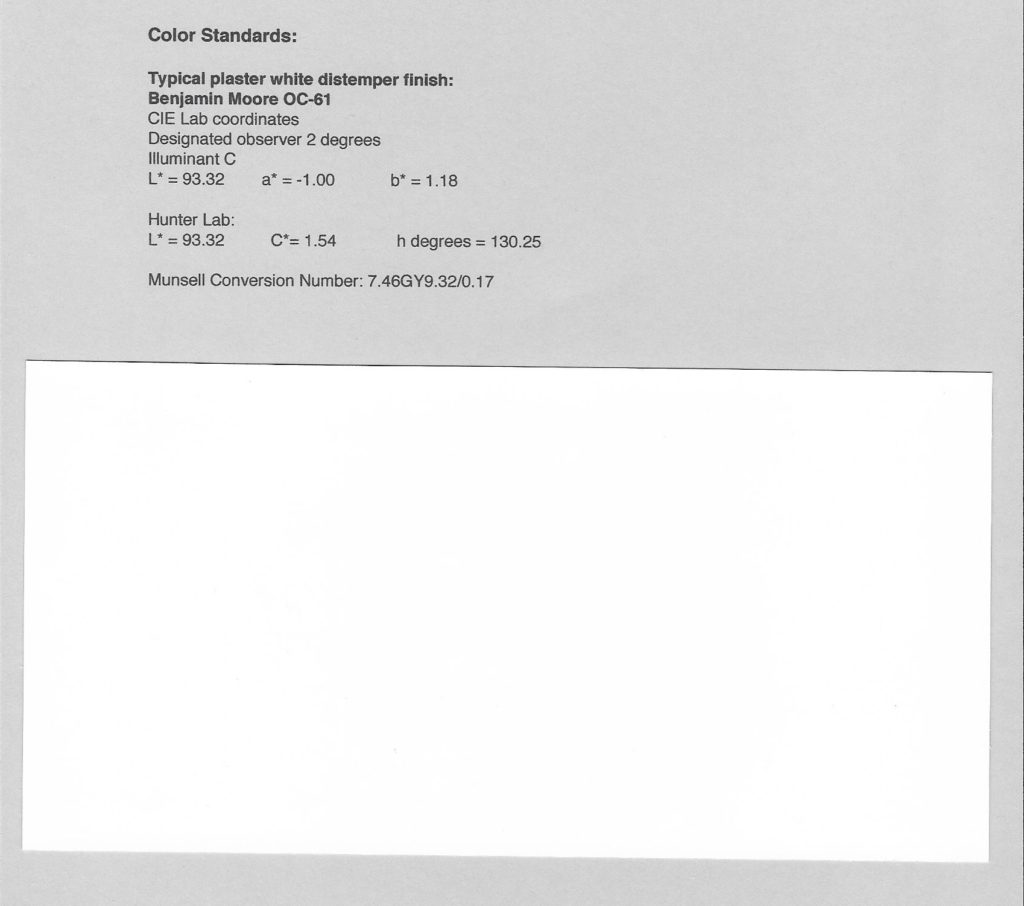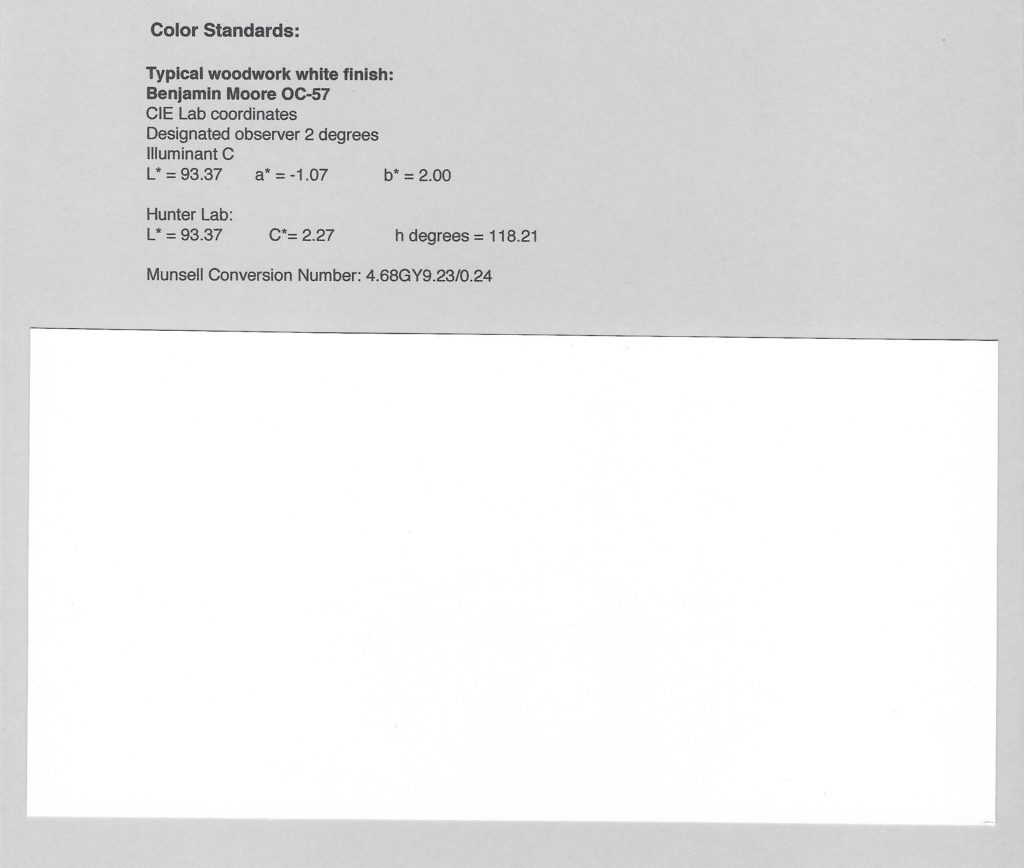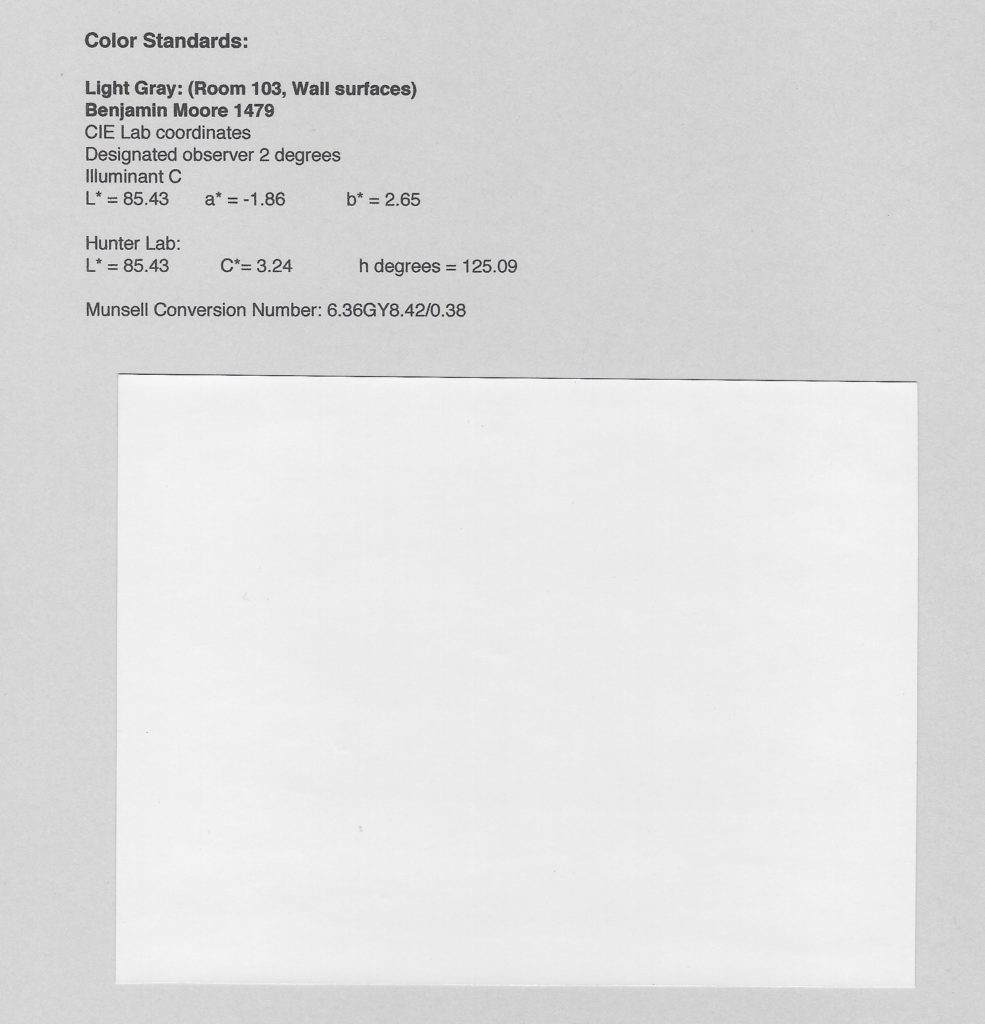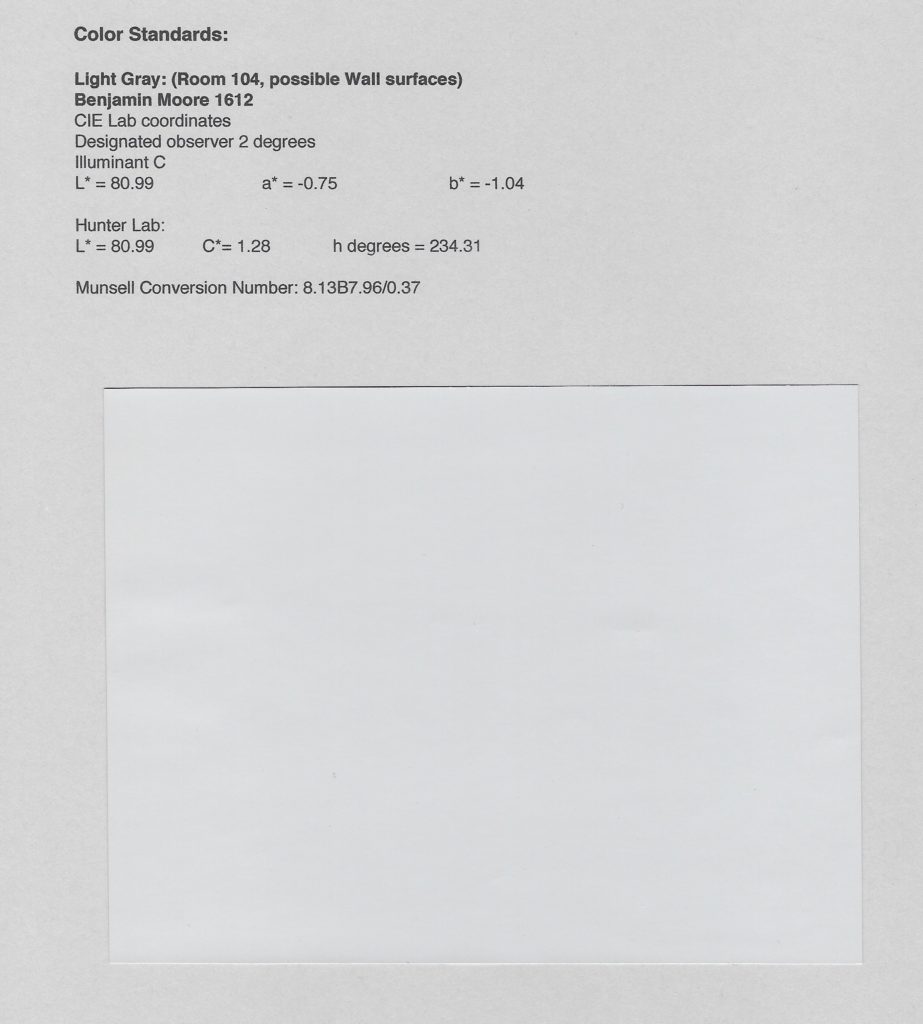Historic Paint Finishes Report: The Original Finishes of the Verandah House, Corinth, Mississippi
Color Standards:
CIE Lab coordinates, Hunter Lab
CIE is the abbreviation for the Commission Internationale de l’Eclairage the French title for the International Commission on Illumination, which devised the CIE Lab system in 1931. It is devoted to standardization in illumination and related areas that include color.
The spectrophotometer registers color standards into a system of measuring color devised in 1931 known as CIE Lab (pronounced See-lab). CIE Lab is a uniform (opponent color scale) color space in which colors are located within a three-dimensional rectangular coordinate system. The three dimensions are Lightness (L*), redness/greenness (a*) and yellowness/blueness (b*). CIE Lab is part of current CIE recommendations.
In addition to the CIE Lab coordinates, the Hunter Lab numbers are also provided. These are based on developments undertaken by Richard Sewall Hunter (1909-1991) who developed a different means of identifying color. The Hunter color space was an effort to regularize the color space: the L axis represents lightness/darkness, with absolute white at 100 and absolute black at 0. Note the drawing below that shows the means of locating any color within the Hunter color space.
On the L* a* b* color model, where a* and b* are zero (point where the axes cross), the color is gray. Gray is without chroma (i.e.: saturation of color) and has undefined hue. Moving out from gray in any direction, the color increases in chromatic strength. Hue becomes defined by the angle of departure, as noted below, from a+ that is set at 0 degrees. The distance moving out from the L axis is C*; the angle of departure is h degrees.
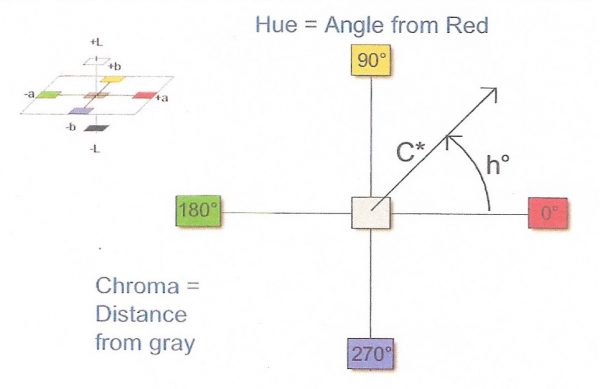
All of the Spectrophotometric readings are done with the X-Rite SP-62 Sphere Spectrophotometer, Designated observer 2 degrees; Illuminant C. Illuminant C is a mathematical representation of filtered tungsten halogen (daylight). The color temperature is 6770K, simulating CIE average daylight.
